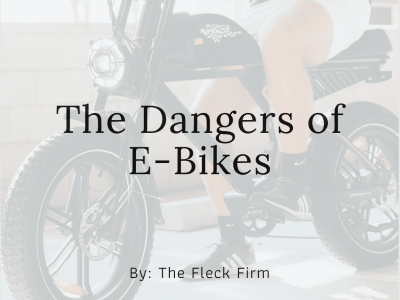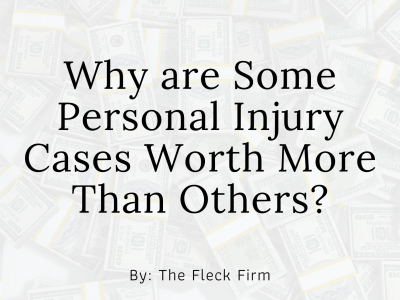Electrically powered bicycles are increasingly popular because they offer the freedom of a bike with an extra push from an electric motor. Riders are frequently injured and killed because they, and motorists around them, make mistakes and cause accidents.
What is an E-Bike?
The federal Consumer Product Safety Commission (CPSC) regulates the safety and sale of low-speed electric bicycles. It defines an e-bike as a two- or three-wheel vehicle with pedals and an electric motor. The motor must be rated less than 750 watts to qualify as an e-bike.
To power the e-bike, riders can use the motor or pedals alone or together. If using just the motor, the bike can’t go more than 20 miles per hour (mph) on a level surface. To meet the federal regulations, bicycle manufacturers created a three-tier classification, though the CPSC doesn’t recognize it:
- Class 1: Maximum speed of 20 mph, and the motor provides power only when the rider pedals the bike (known as “pedal assist”)
- Class 2: Maximum speed of 20 mph, the motor delivers power independently of the pedals
- Class 3: Maximum speed of 28 mph if the pedals and the motor are used simultaneously. These e-bikes are intended for commuters and others who travel farther than bicyclists would easily accomplish. Only the best professional bicyclists could approach traveling this fast for any length of time
Almost 900,000 e-bikes were sold in 2021 in the US, nearly double the number from the prior year. National Bicycle Dealers Association states total e-bike sales revenues in 2022 were about $1.3 billion in 2022, a 33% increase from 2021, reports Fortune.
Other attorneys take contingent fees of 33% to 50% of your settlement.
We want you to keep more of your money.
Our contingent fee is only 30% on cases settled prior to filing suit.
What are State Laws Concerning E-Bikes?
Kentucky uses this classification. Though localities can impose their own rules, in Kentucky, class one and two e-bikes are allowed on bike and multi-use paths, in addition to anywhere a bike can legally go. Class three e-bikes are not permitted on bike and multi-use trails. Helmets are mandatory for riders younger than 18.
How Dangerous Are E-Bikes?
As e-bike popularity increases, so do the related injuries and deaths. The CPSC estimates emergency department visits due to e-bikes, hoverboards, and e-scooters more than doubled from 2017 to 2021. The National Transportation Safety Board counted 53 e-bike-related deaths for that same period. It admits there’s a lack of good data, so the estimates may be far lower than what’s happened.
Dr. Joseph Patterson, an orthopedic trauma surgeon with Keck Medicine of USC in Los Angeles, is quoted in the Fortune article as stating that compared to bike accidents:
- People injured in e-bike accidents often don’t use helmets and are ejected from their e-bikes at speeds much higher than those involved in typical bicycle accidents
- Patients are more likely to have open fractures, where broken bones come out of the skin
- Accident victims are more likely to have more than one body part or organ seriously injured
- Those injured on e-bikes have more severe injuries overall, are more likely to need surgery, and stay in the hospital longer
Overall, the injuries are more like those suffered by motorcyclists than bicyclists.
Dr. Charles DiMaggio is the director of injury research at NYU’s Langone Department of Surgery. He’s the author of an analysis of 2000-2017 data concerning e-bike accident injuries. He found that e-bike accidents are three times more likely to involve hospitalizations than traditional pedal cycles. Many of these accidents cause internal injuries, and patients can end up in intensive care units.
What’s Causing These Accidents and Injuries?
Older riders may have slower reaction times, are more likely to suffer a severe injury, and don’t recover as quickly as younger riders, who can be bad at judging risks and may not understand how much irresponsible riding (like running stop signs or red lights, going too fast, using smartphones while riding, or traveling in vehicle lanes) risks their safety.
Some riders modify their e-bikes so they can go far faster than what they’re supposed to go. E-bikes made by Sur-Ron have been involved in several fatal accidents, according to the New York Times. The company’s marketing materials state one model handles like a bicycle but has the power of an off-road motorcycle.
The e-bike’s limited speed of about 12 mph can be increased if an easily accessible wire is cut. That wire access may be an unofficial feature, and instructional “jailbreaking” videos are easily found online. Afterwards, the e-bike may travel up to 70 mph. An e-bike whose brakes are designed to stop it when it’s going 12 mph will be unable to safely stop it when it’s going 50 mph faster.
You have a potentially deadly combination if you mix in vehicle drivers unaccustomed to sharing the road with e-bikes or who act irresponsibly and negligently.
Were You Injured in an E-Bike Accident?
Whether you were injured while riding one or due to someone dangerously riding an e-bike, you may have legal rights to compensation if the other party acted negligently or intentionally. Call The Fleck Firm at (270) 446-7000 to schedule a free consultation so we can talk about what happened, how Kentucky law may apply, and your best options to proceed. Insurance companies have lawyers. You should have one, too.








